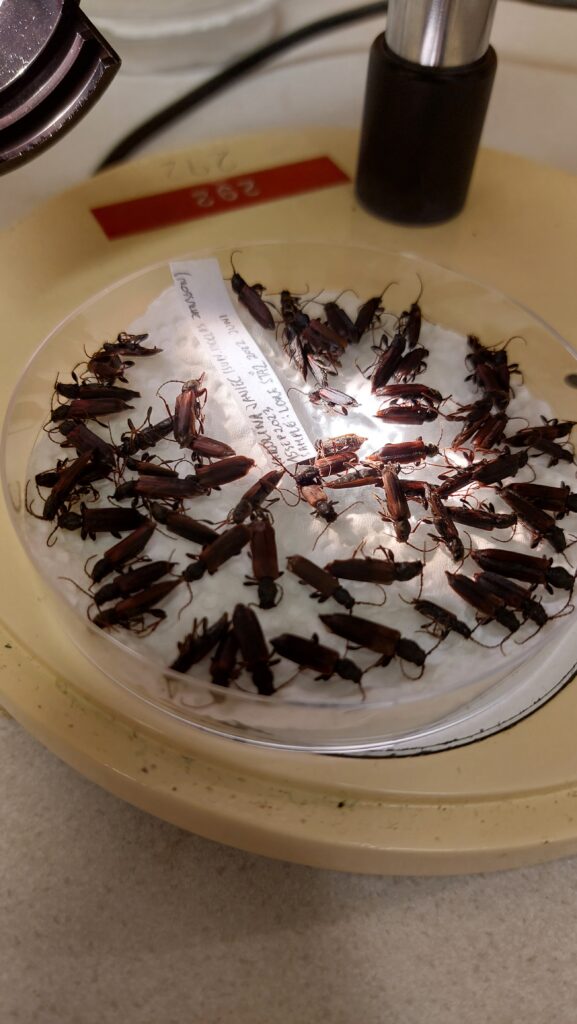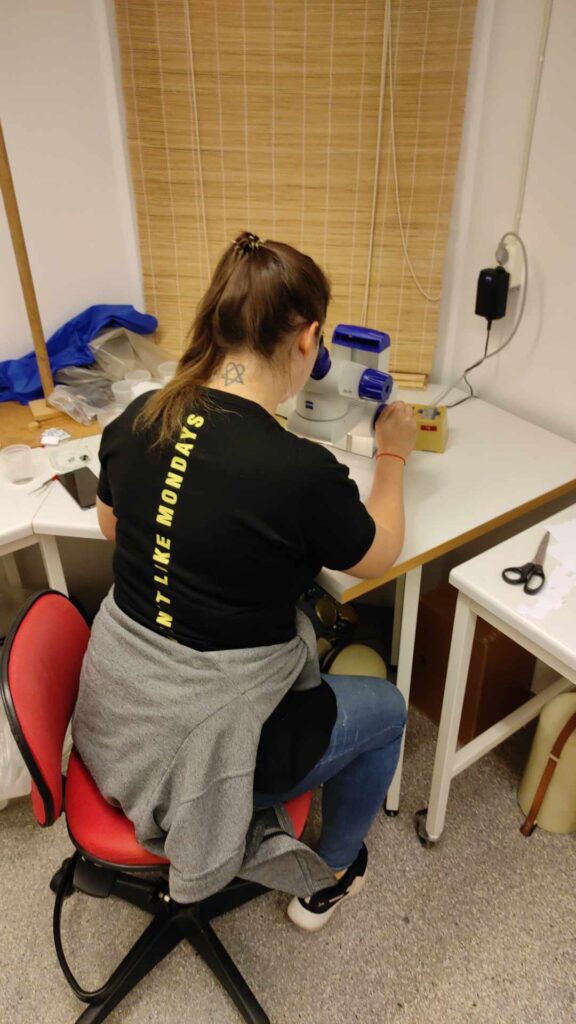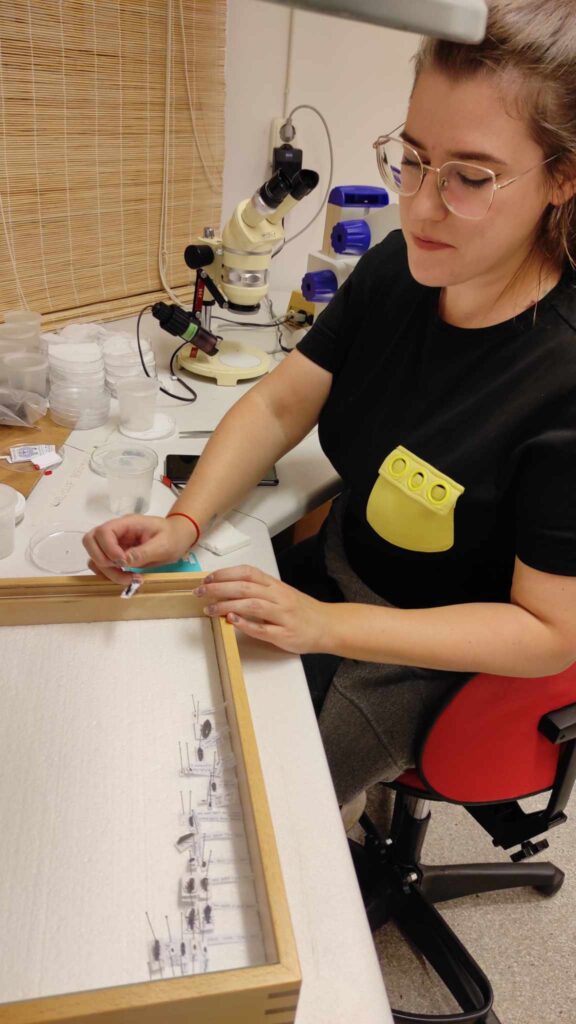Study sites
I visited four nature reserves in Östergötland: Loreberg, Ösbyskogen, Storskogen and Hälla. All these sites were coniferous forests or mixed forests dominated by coniferous species. The reserves were facing problems with large outbreaks and excessive colonisation of spruces by the European spruce bark beetle since the drought of 2018. Since 2019, the debarking and felling of newly colonised spruces in the reserves was performed by the County Administration Board of Östergötland.
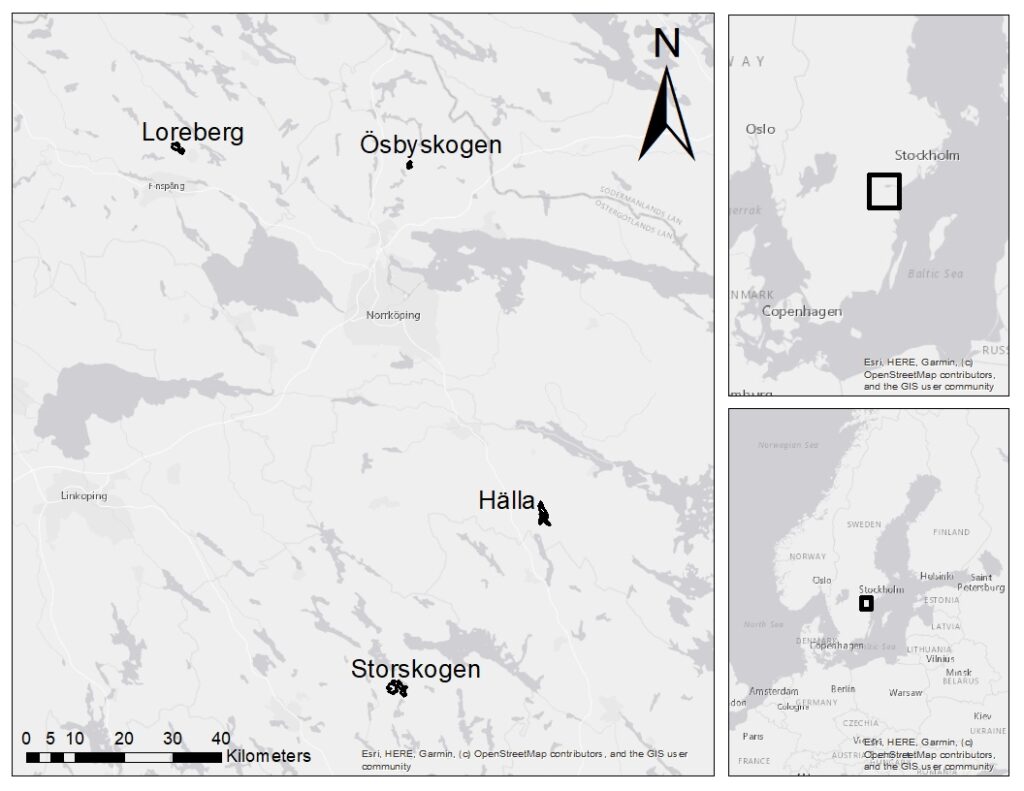
Sampling
I installed 89 eclector traps to catch beetles emerging from three types of wood: debarked logs, standing trees with bark, and logs with bark. The wood was also of four different ages, which means that it was either debarked or left with bark in years 2019, 2020, 2021 or 2022.
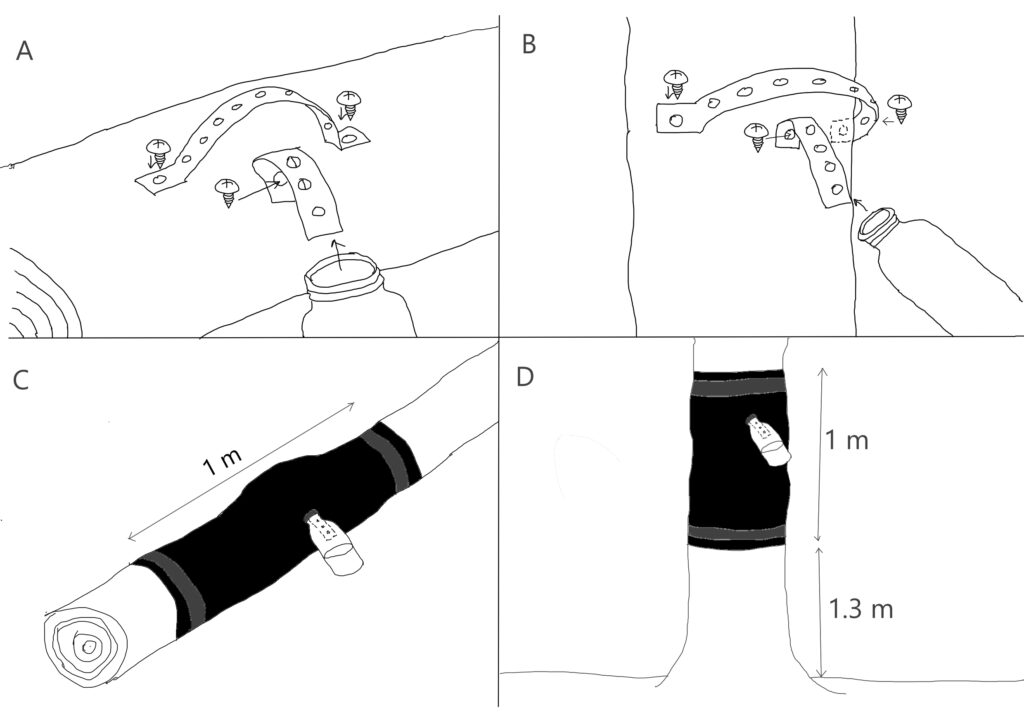
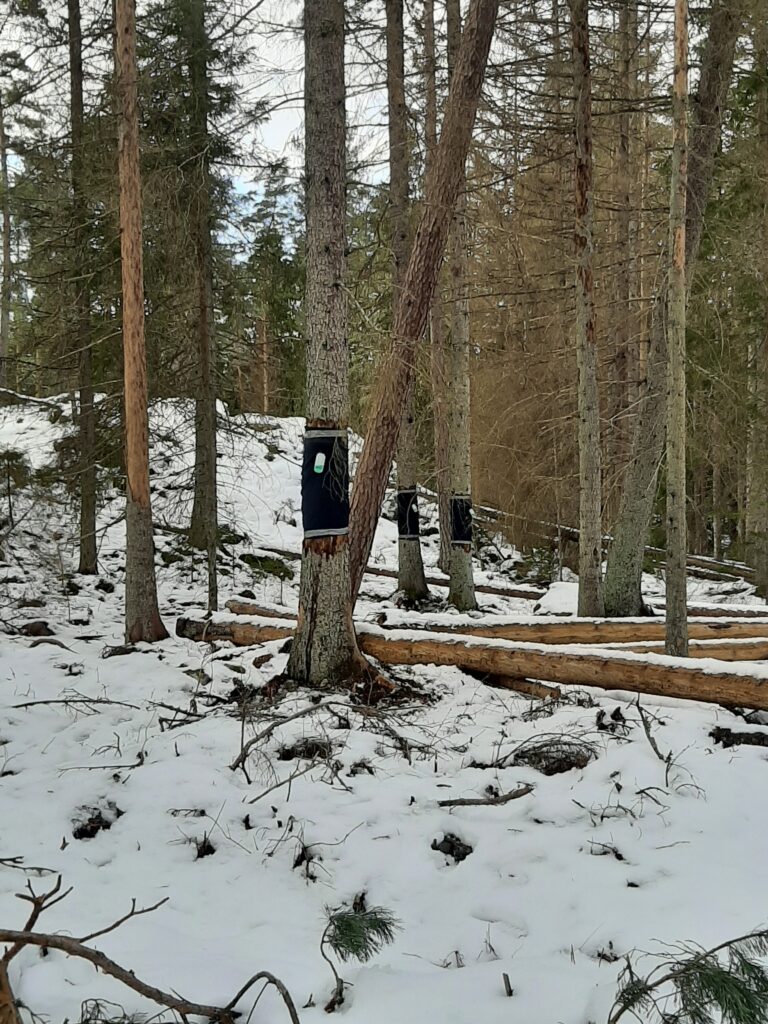
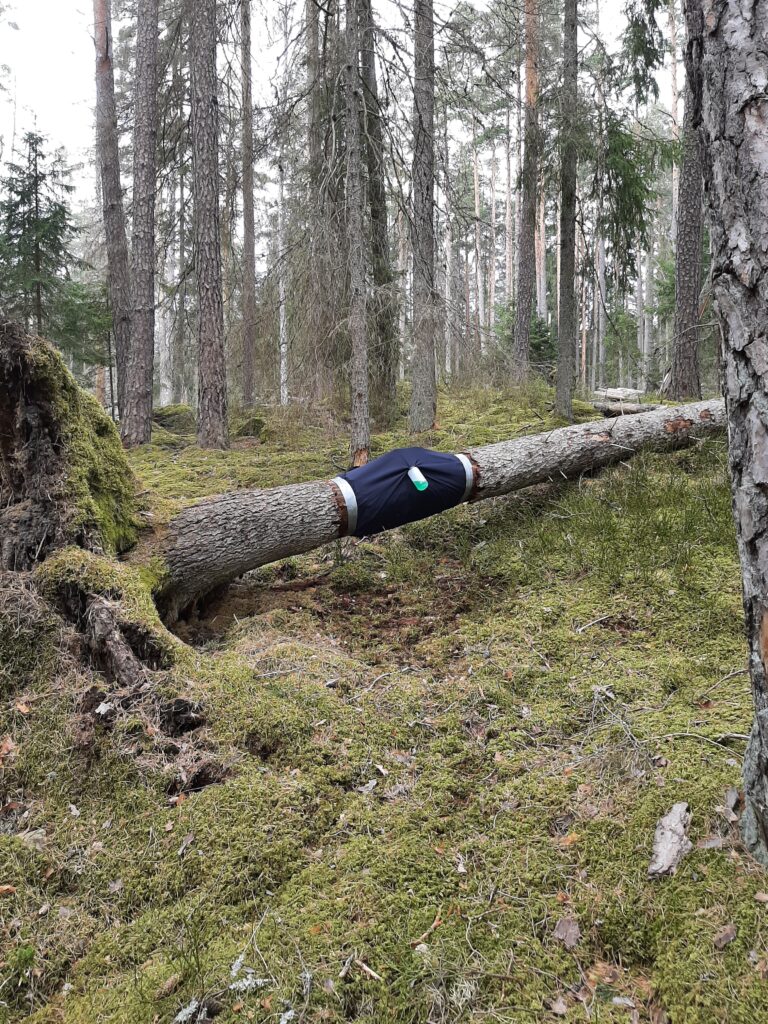
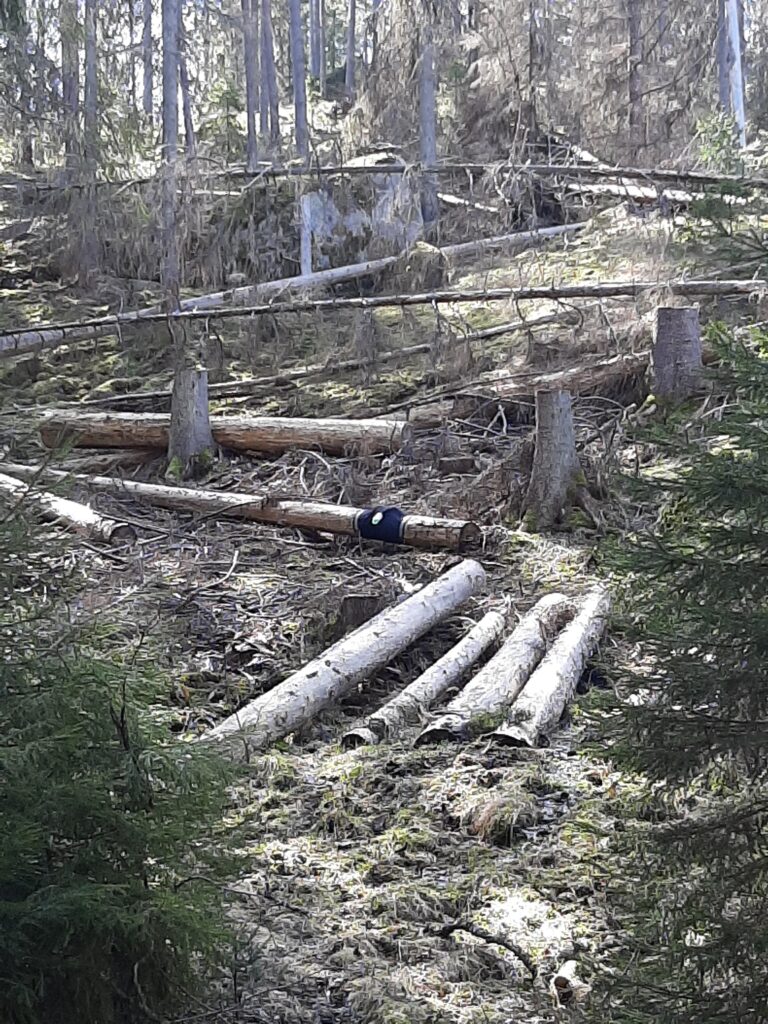
Sorting, identification and statistical analysis
I sorted and counted all adult saproxylic beetles caught in the traps. Afterwards, I identified them to the lowest taxonomic level possible – in most cases to species.
When all my individuals were identified, I statistically analysed my data. I used GLMM-tests to assess the effect of wood type and age on the number of species and individuals. I also used PERMANOVA-tests to analyse species composition.

